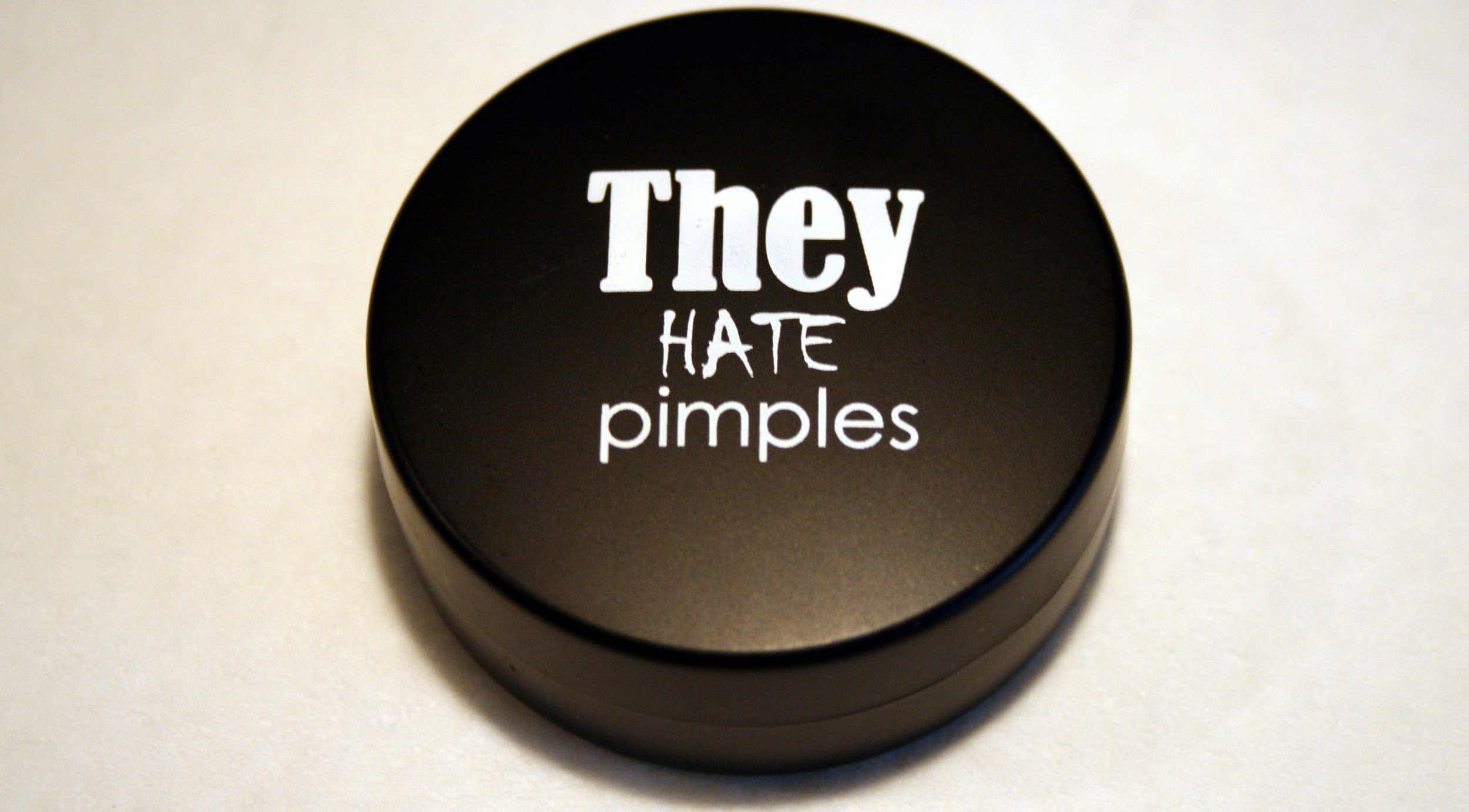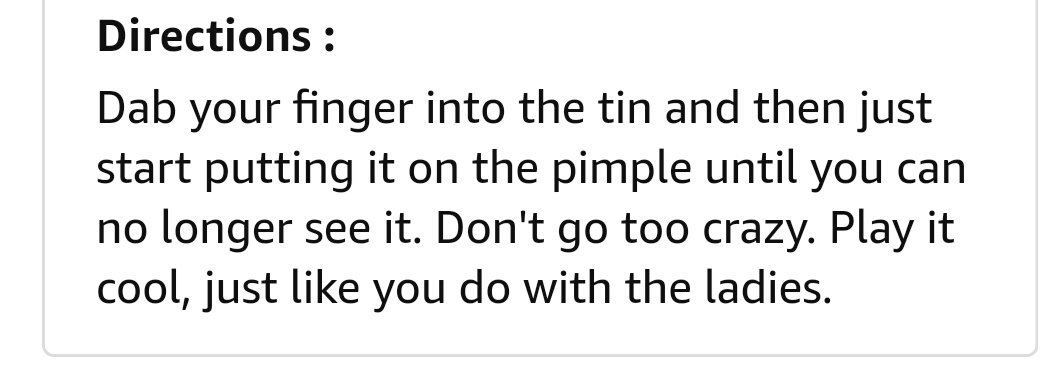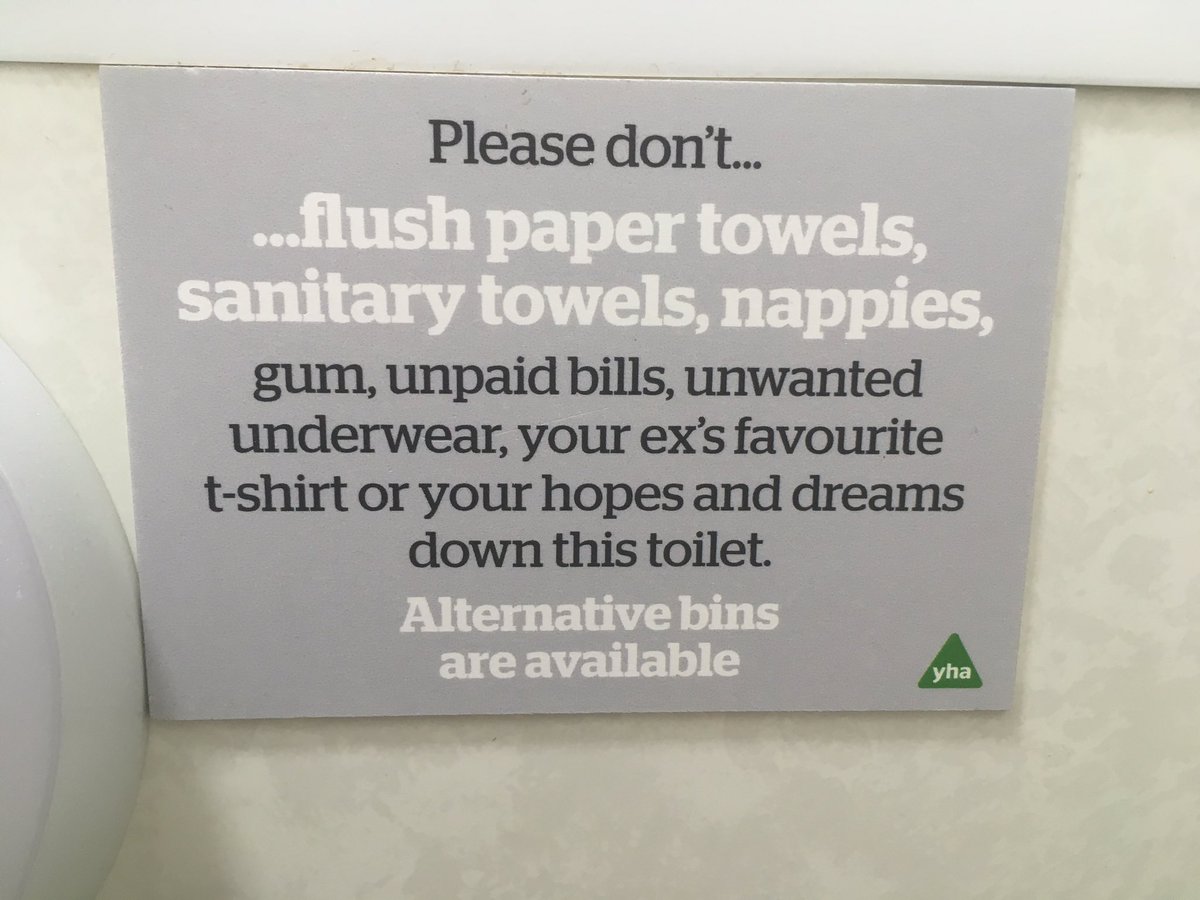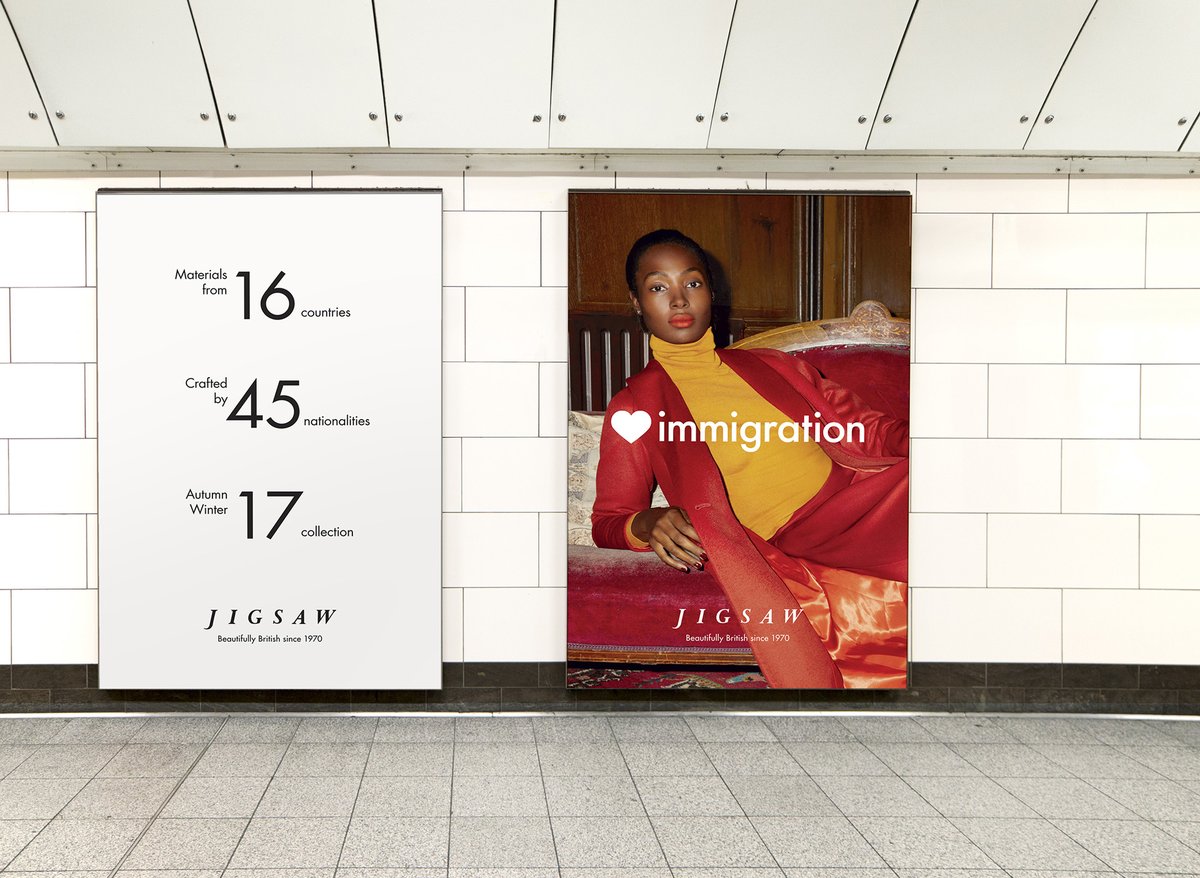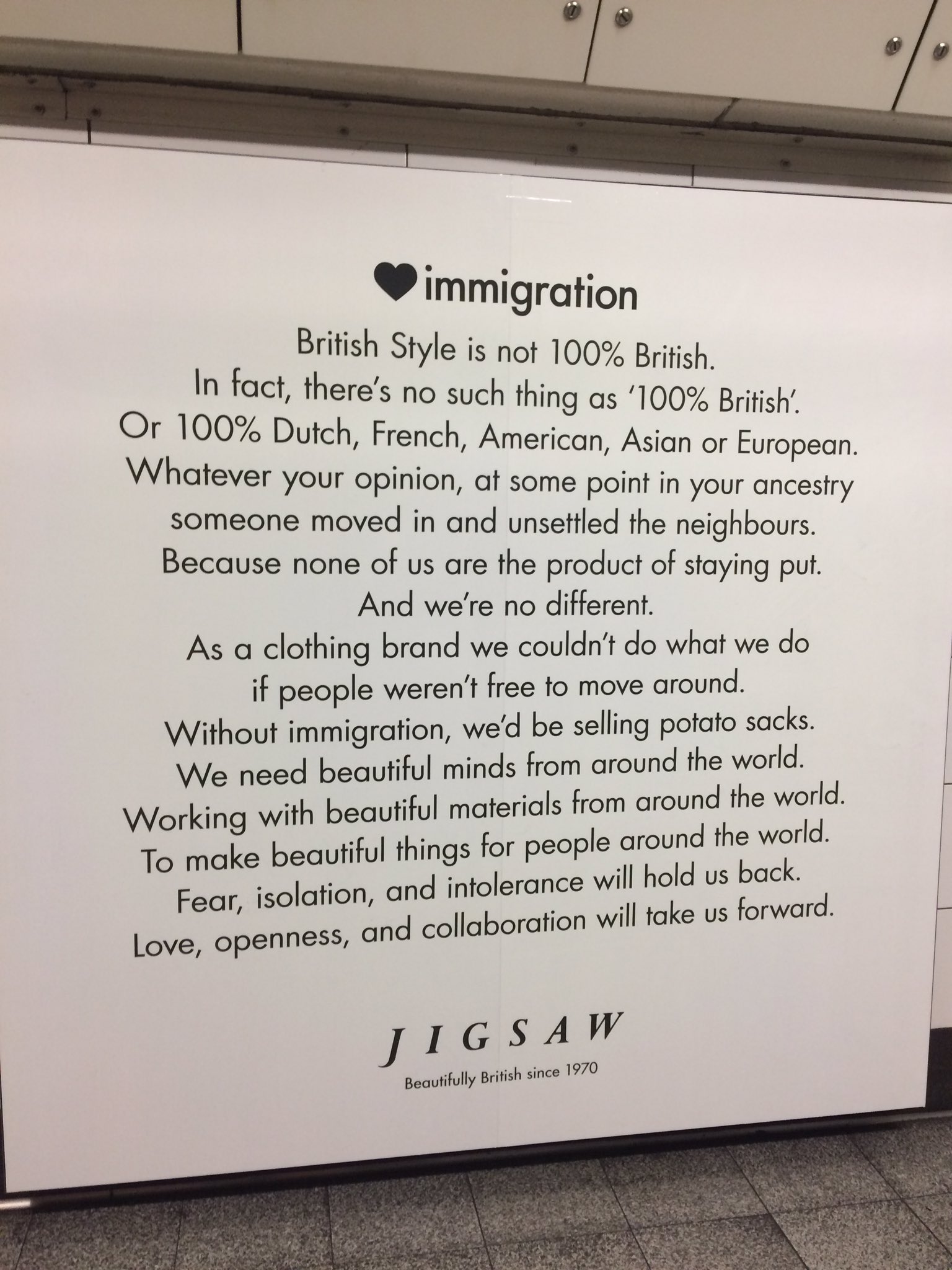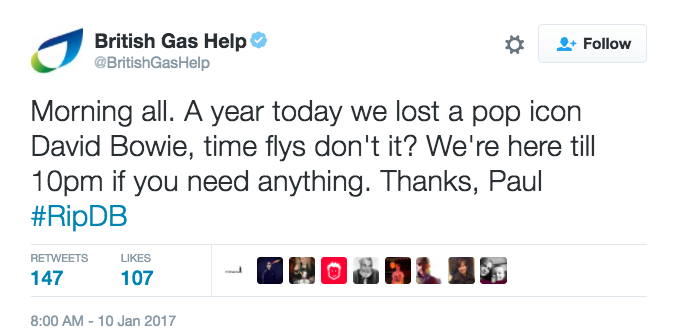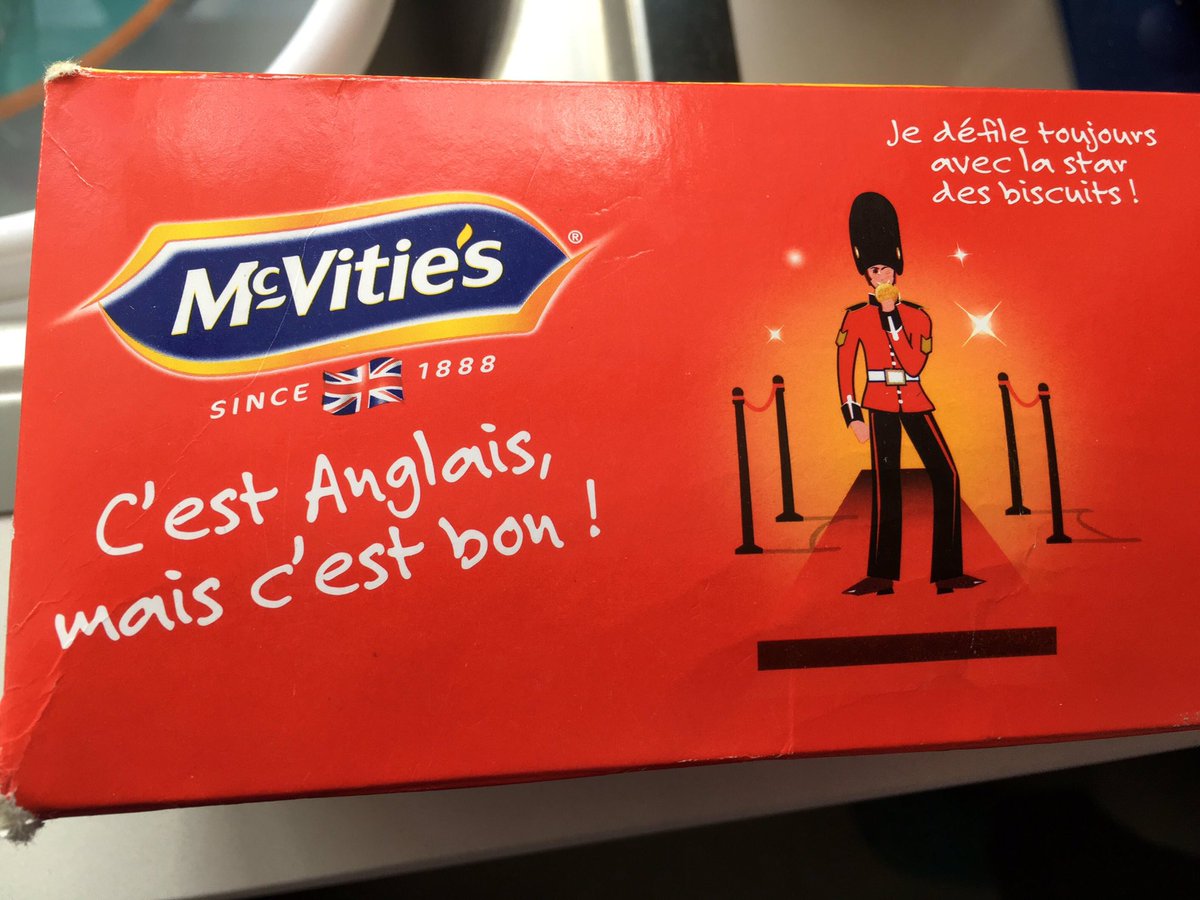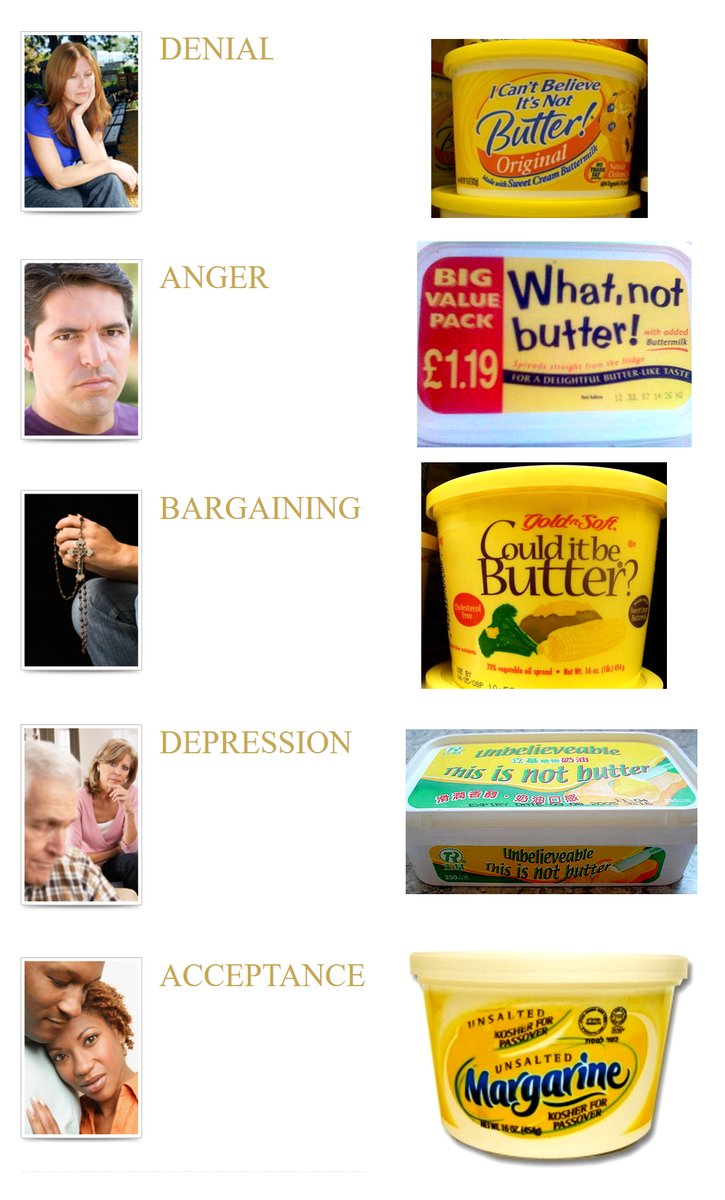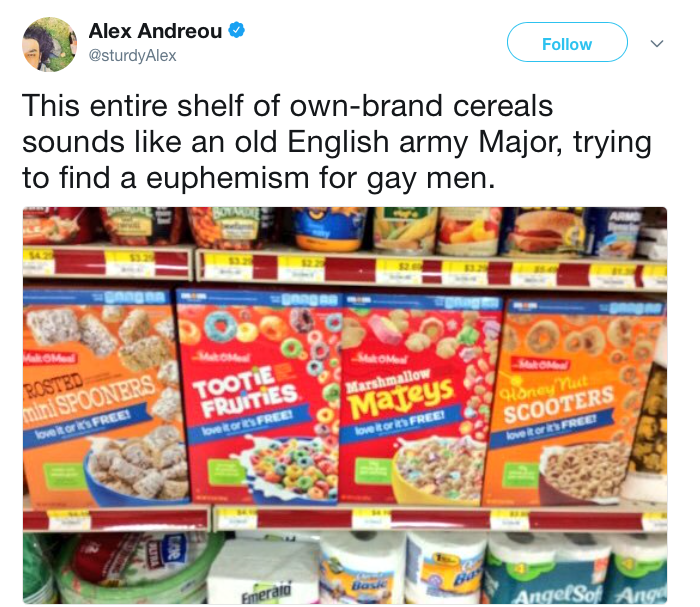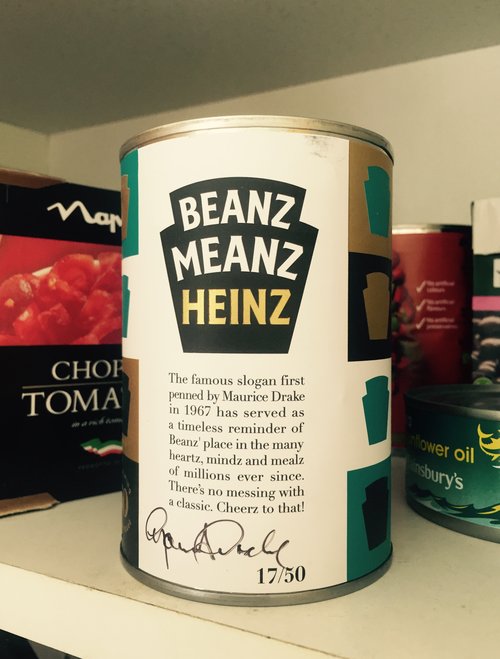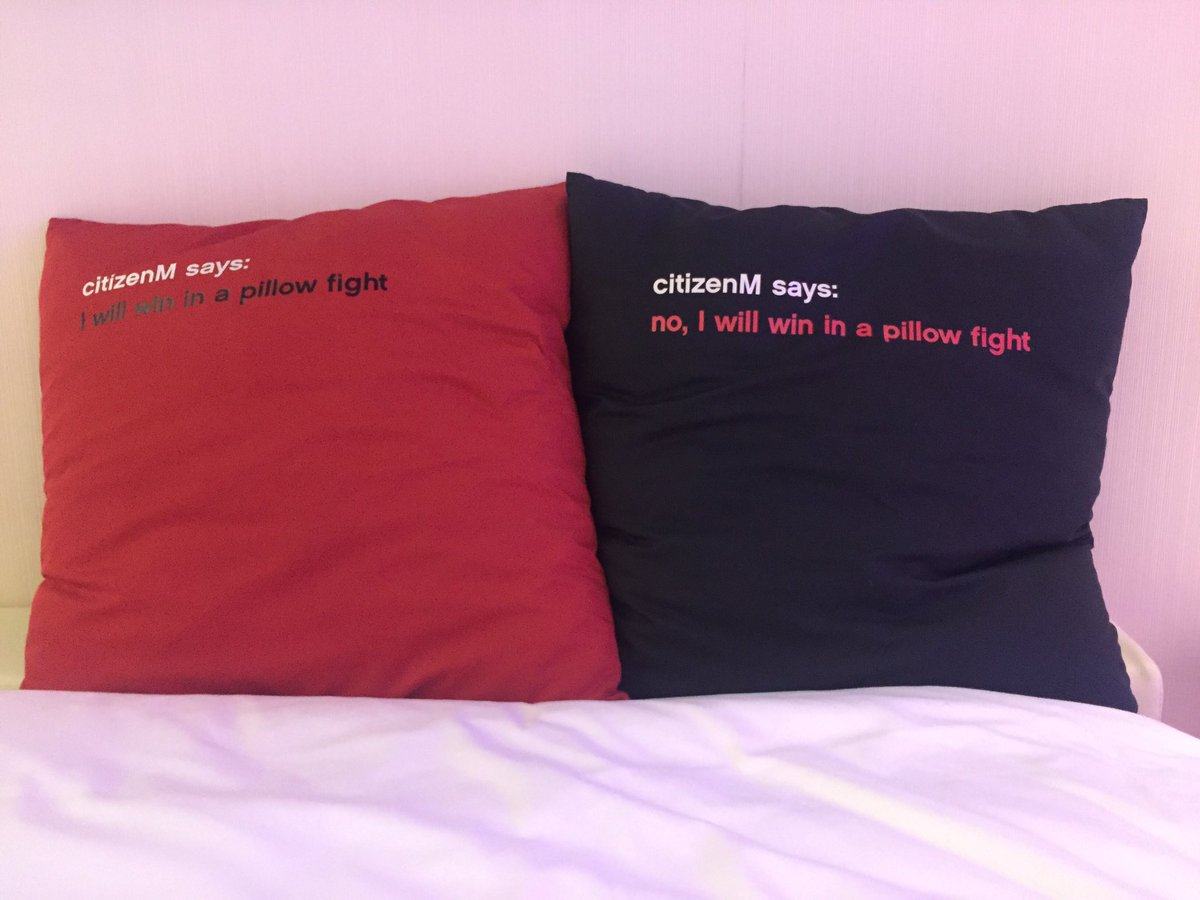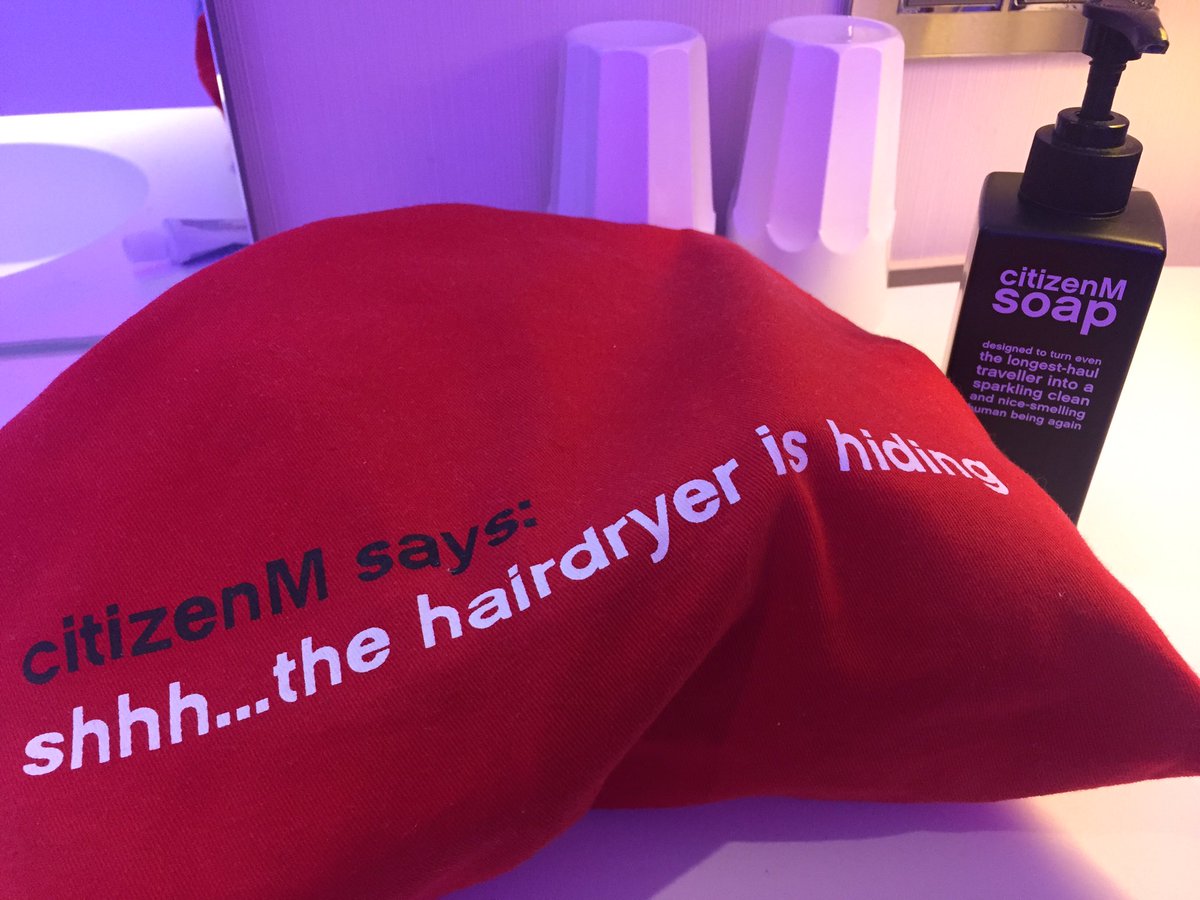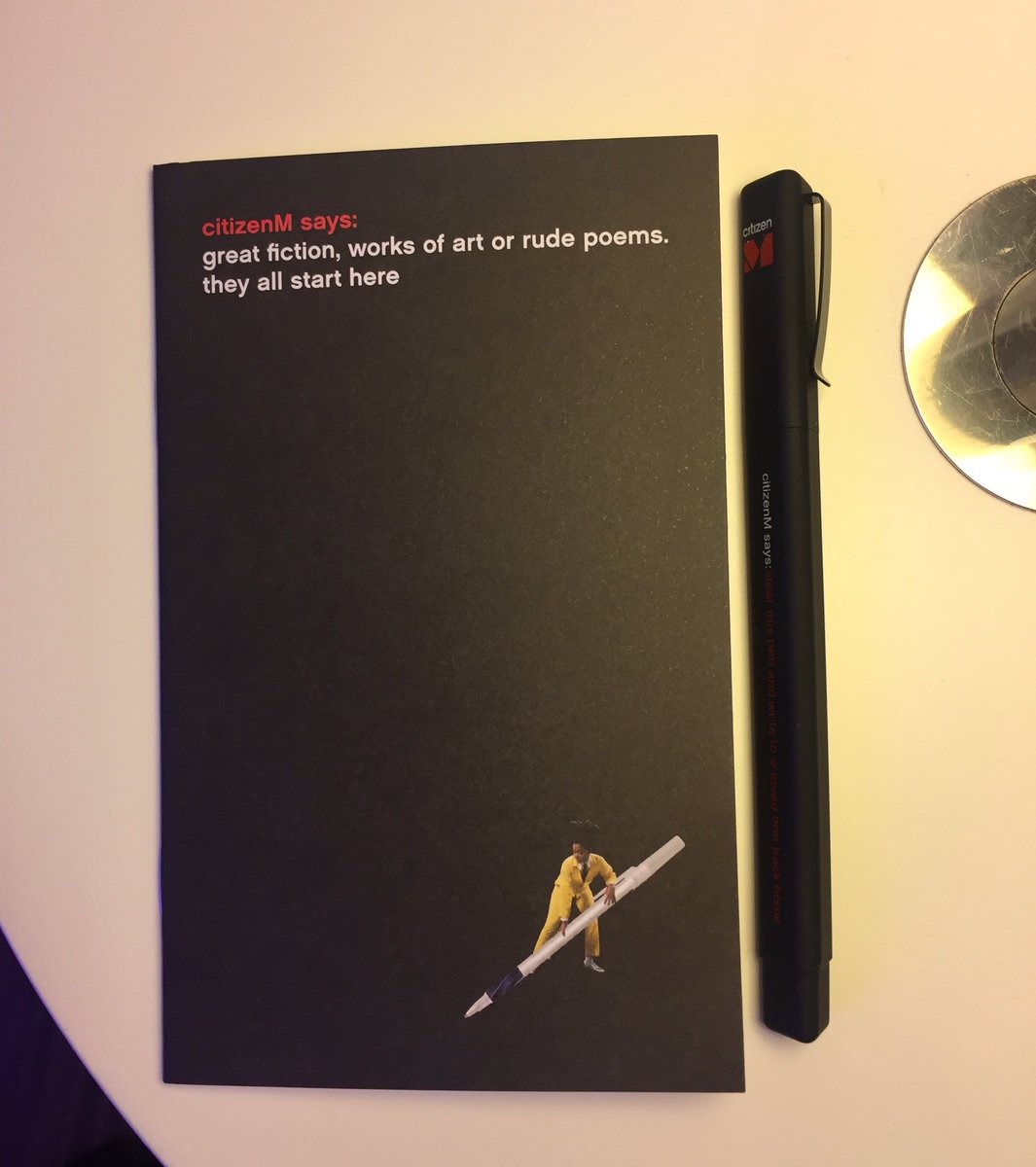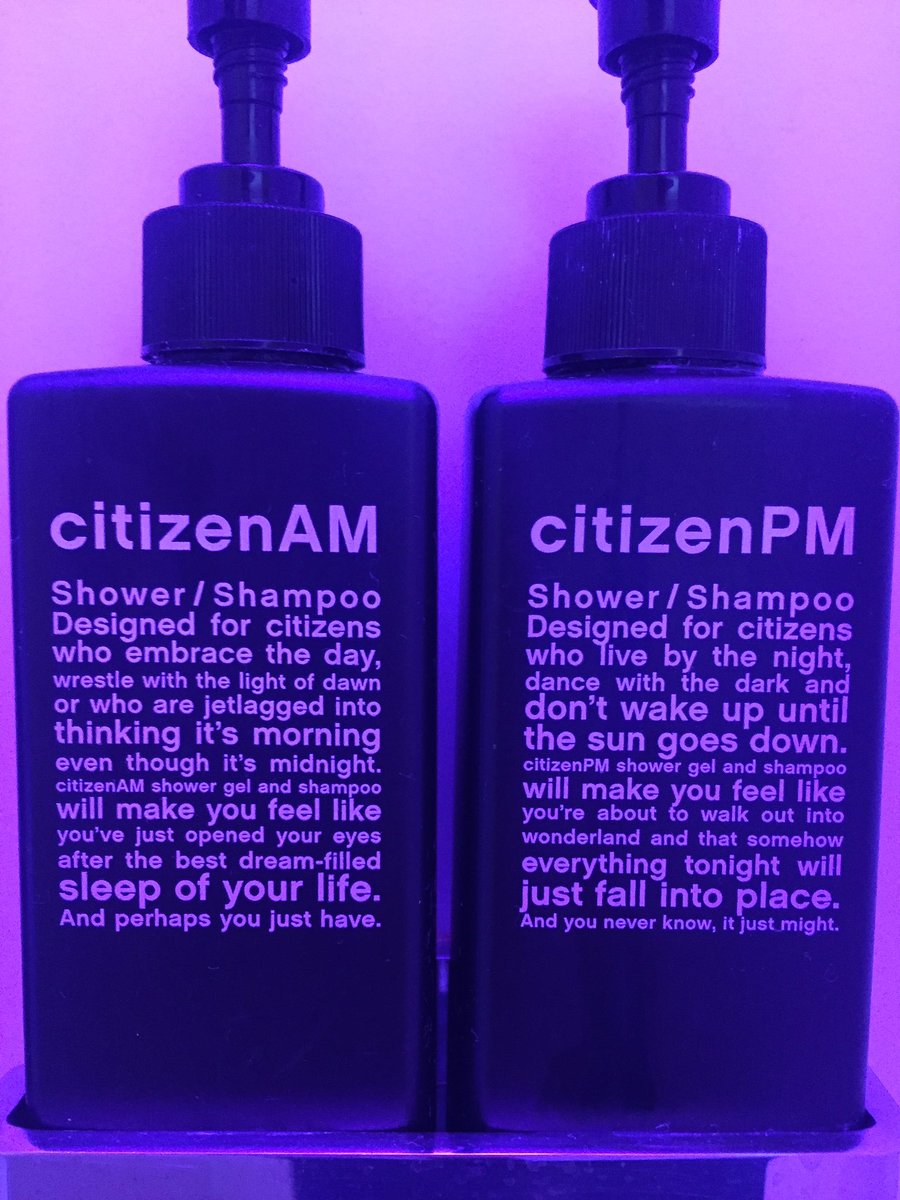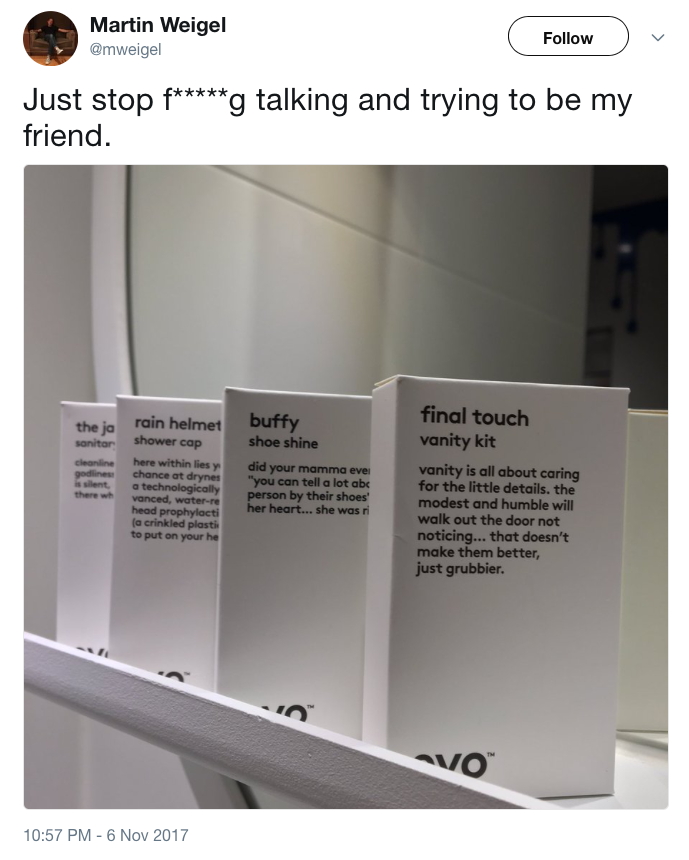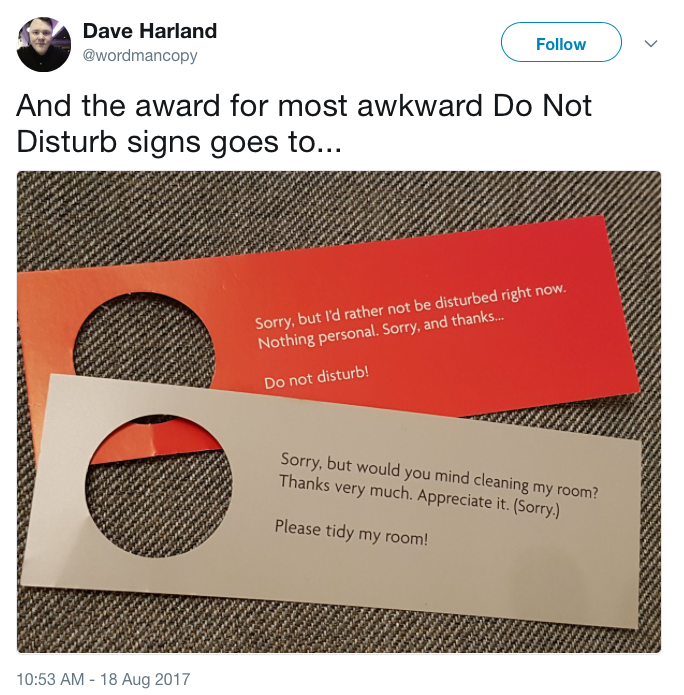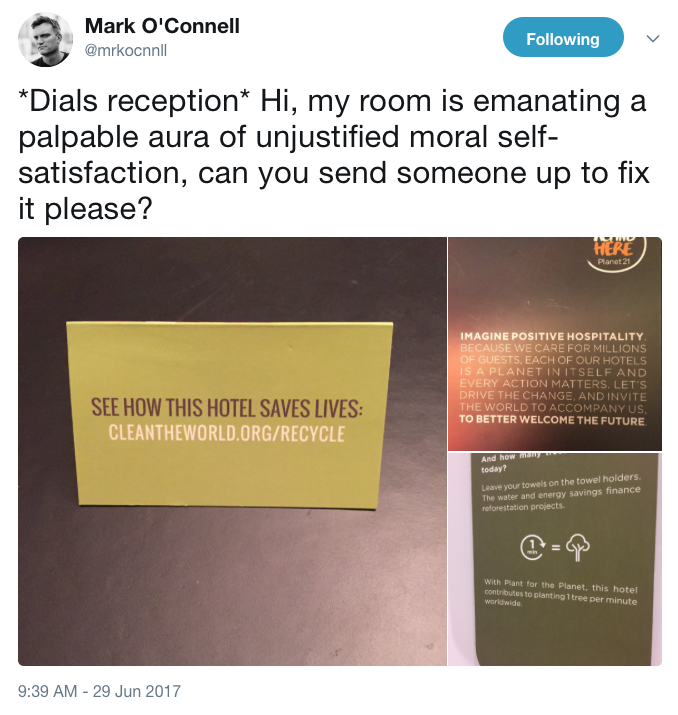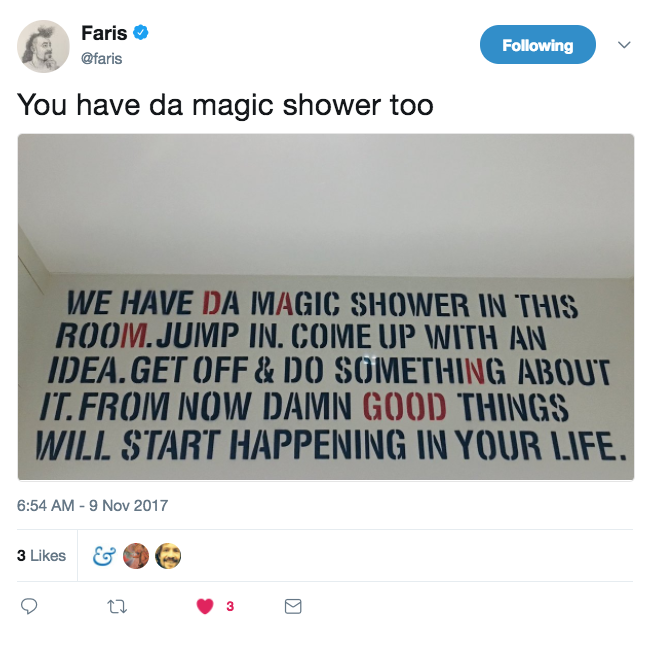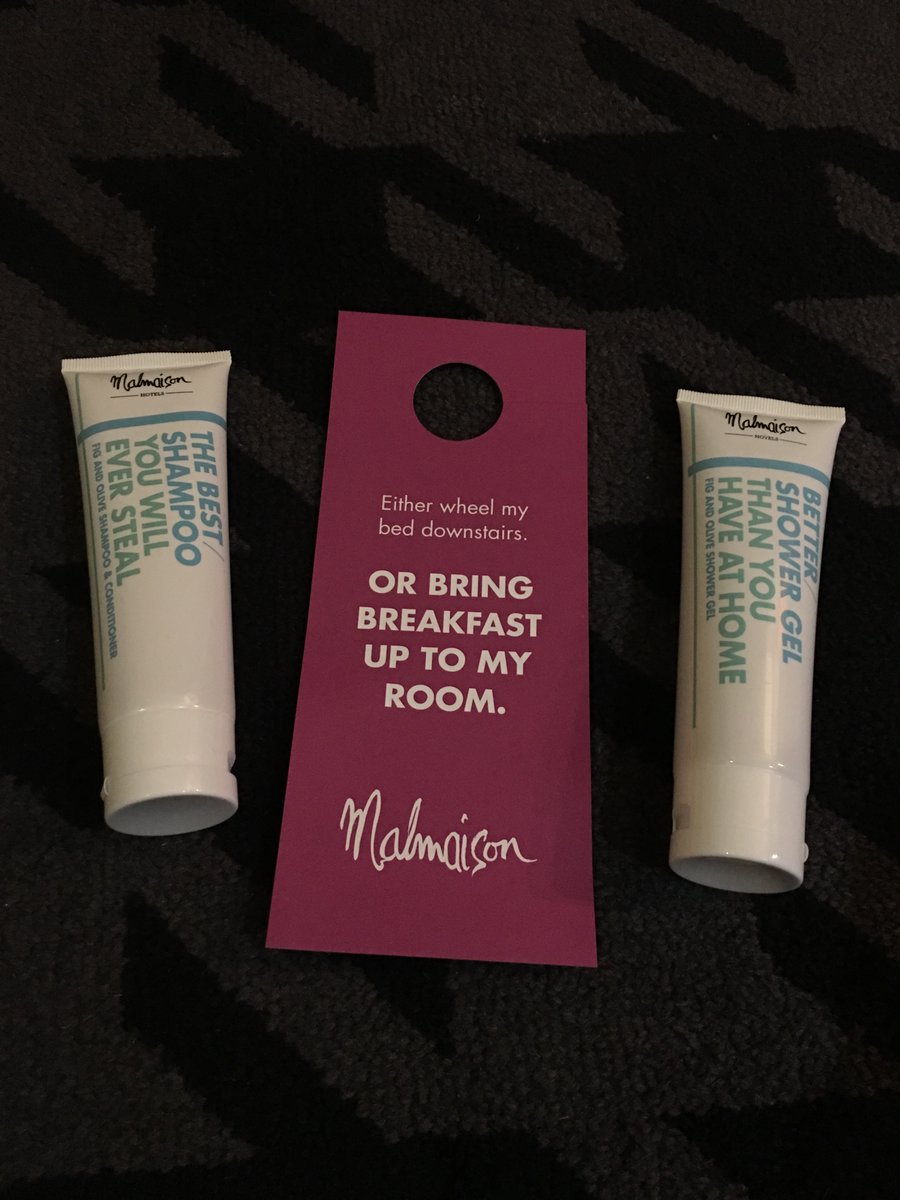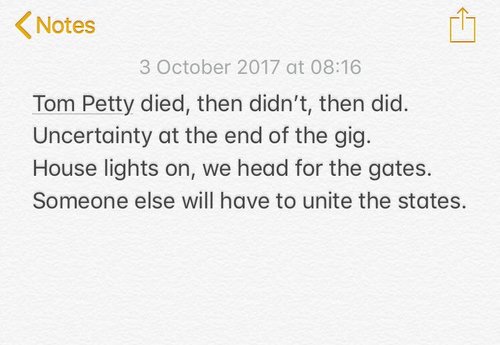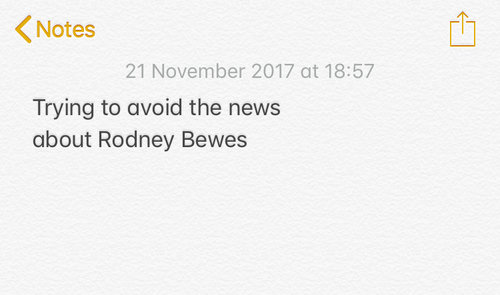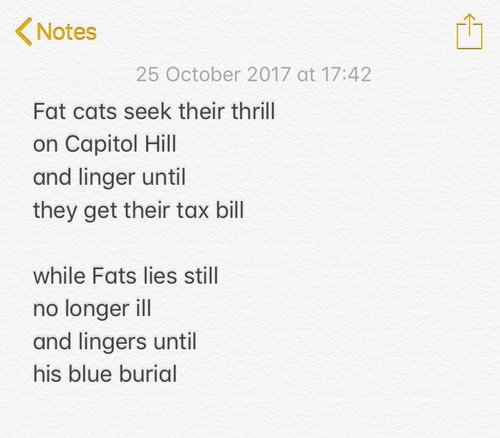It’s been a year of words. I started off reading them, collecting snippets on a Tumblr called Reads. But since August I’ve mainly been writing them. Realtime Notes is an Instagram collection of poems about current events — I’m on poem 247 and hoping to carry on for a while.
Given that I’m effectively reviewing the year hour-by-hour on Realtime Notes, I’m not sure this Review of the Year is strictly necessary. But then again it’s important for the world to know what packaging copy I found funny this year, and there is a satisfying catharsis in writing these things — and hopefully reading them too.
(NB: I've tried to link to all the original tweets where I've found stuff. In most cases, the links take you to the original tweet where the image was found, rather than taking you to new/extra stuff. So don't feel you have to click on everything. Yes? Does that make sense?)
INSECURE MASCULINE BRANDING OF THE YEAR
In the year of the mainly female silence breakers (a well-handled move by Time), it’s interesting to see how brands are handling masculinity.
Branding for men still generally takes the approach of turning oats and coconut into grenade chaos.
Easily the most insecure branding of the year goes to They Hate Pimples for turning a spot cream into military camouflage. (And definitely not make-up.)
Meanwhile, Tesco has read the mood and dropped the Mansize from its tissues. (I still prefer Kleenex Brand Tissues, handy for any embarrassing brand situation.)
But Three Lads are still just Three Lads.
TRUMP TROLLING OF THE YEAR
Speaking of insecure masculinity, Trump has continued to troll the world, and there have been some nice instances of the world trolling him back.
Some good crowd size trolling here.
An excellent New Yorker cartoon.
Keeping it simple.
But the award goes to the New Sunday Herald, for this excellent TV listing.
PROTEST SIGN OF THE YEAR
On a related note, probably the most useful thing I wrote this year was an emergency guide to writing protest signs. With so much to protest about, there have been too many signs to mention. But I enjoyed the ‘Welcome to Kenya’ signs on Trump’s visit to Obama’s birthplace in Hawaii.
ADVERTISERS AGAINST TRUMP
While there has been lots of brilliantly creative popular protesting against Trump, official responses have been mixed. I wrote about the New York Times campaign and how I felt it missed the mark. The Washington Post also went arguably a bit too gothic with ‘Democracy dies in darkness’. More recently, it felt like CNN got closer to nailing it by using humour, which helps make a serious point more powerfully.
WORST AD – RUNNER-UP
The worst ad really should be Pepsi, although at least it kept us entertained.
I really wanted the cellist at the beginning to join the march Woody Allen-style.
Among the duller takes were that it shows the perils of using in-house agencies (like ad agencies never do bad ads), or the ‘we’re talking about it, so it was all a cunning plan’ take (you cannot plan things this bad, and being talked about doesn’t always help your brand.)
In any case, the cultural feedback loop moment of the year came when protestors started throwing Pepsi cans at police.
WORST AD
The single worst ad of the year, for its outstandingly bleak and misanthropic use of media, is the audio ad in the Virgin Trains disabled toilet. You have no choice but to listen to it – it comes on automatically when you walk in.
This was also the year that Virgin Trains replaced this iconic piece of in-toilet copy...
...with this rhyming version.
I feel like this is an improvement but, as with the French Revolution, it is probably too soon to say.
To confuse things further, the YHA nicked the Virgin Trains copy, so who knows what to think any more.
BEST AD
I’ve a feeling a lot of people will pick Jigsaw for their unambiguous celebration of immigation. I get uncomfortable with brands preaching politics, even if you agree with the politics – and I think the message loses impact by being too overt and preachy. However, a lot of people loved it. And I’m aware that the experience of encountering an ad in person is very different to seeing it online – I suspect it was quite moving to walk around the tube at Oxford Circus and feel the affirmative power of those ads.
On a related note, I wrote at length about brand purpose this year. While I’m sceptical about it as a core way of thinking about brands, I do think brands participate in culture and can do little things to shift norms. Casting a gay couple in an ad may seem like box-ticking, but these small acts add up to gradual normalisation – I just think they work better done quietly and modestly, rather than ‘look at us leading the revolution’.
As a response to these times, I prefer the humour of Timberland – a rare case of a brand trying to empathise with ‘millennials’ and getting it right.
BEST INFOGRAPHIC
Some quickfire ones now. Smart use of punctuation as data visualisation.
BEST DISINFOGRAPHIC
Contrast with this conspiracy infographic displayed on Fox News – like a map of its inner mind. (Both of these last ones via @michaelbierut)
WORST BRAND TWEET
An argument for using bots instead of humans to write tweets.
BEST BRAND TWEET
Also an argument for using bots instead of humans to write tweets.
WORDPLAY OF THE YEAR
As with everything on the Internet these days, it’s hard to know if Photoshop was involved.* But I was impressed by this ‘found’ version of Wonderwall by @thepunningman.
* I can now confirm no Photoshop was involved. Hooray, some things are real.
PACKAGING COPY OF THE YEAR
OK, packaging copy. As usual, there was some heroic padding going on.
And the saboteurs at McVitie’s casually dropped a line that translates as ‘It’s English but it’s good’.
But this was mainly the year of funny tweets about packaging. Firstly, someone cracked the butter code.
And Alex Andreou realised what’s really going on with cereals.
But this Apple Juice observation was my favourite — go here to retweet it.
SLOGAN OF THE YEAR
This was the year that Beanz Meanz Heinz turned 50 and was celebrated in an exhibition at Selfridge’s. I believe the correct hashtag is #copywritergoals
We also witnessed a slogan occurring to Donald Trump in real time.
Cards Against Humanity refocused their energies on Prongles – a real, unauthorised and widely distributed pastiche of Pringles. It was a convoluted joke and the target wasn’t especially clear. But the best thing about it was the slogan.
And in a new twist on slogans, probably my favourite of the year was Yes good by Emerald Nuts, taken from a real customer review on Amazon.
BEST COPY EDITING
Two winners here: Chuck Schumer for this letter about Senate oversight of Presidential nominations, in which he took a letter from Mitch McConnell (written in different political times) and sent it back to him.
The other winner is this person’s dad for a brilliantly pedantic birthday card strategy in which he crosses out the bits that don’t apply.
‘DESIGN FOR GOOD’ PROJECT OF THE YEAR
Here’s an example of a ‘design for good’ project without a fanfare, hashtag, case study video with Sigur Ros soundtrack, or story six months later about how it was all a scam.
TWITTER MOMENT OF THE YEAR
This was the year that Twitter moved to 280 characters, which turned out not to matter very much. Probably the best moment was when Trump ceased to exist...
... which had parallels with the silent News at Ten, probably the most eloquent commentary on 2017 that there has been.
ALL ABOUT ME
My personal highlight was the release of Sideways Dictionary, an online dictionary of analogies for technological terms, created in partnership with Jigsaw and the Washington Post – one of the most enjoyable and mind-bending things I’ve written.
Also, this year saw an updated version of Perpetual Disappointments Diary come out with Pan Macmillan, and a new version in the US with Chronicle Books. (Pic by @lettemoore)
And I briefly went viral with a piece for McSweeney’s and Louis Theroux said he loved it.
WISH FOR 2018
My wish for 2018 is for hotels to introduce tone-of-voice-free rooms. Over the summer, I stayed in a Citizen M hotel, which was great except for the cacophony of copywriting (all of which looks nice as individual executions on a screen, but less so when it’s combined into one room where you have to live and sleep).
I’ve collected a few other examples (scroll through above).
To be fair, Malmaison is quite funny. But it takes a very funny joke to be funny the eighth time you read it.
THOSE WE LOST
Lots of people have sadly gone, some of them memorialised in Realtime Notes above.
And not forgetting Brenda Webb, who fell to Cher.
LINE OF THE YEAR
Not sure who came up with ‘The rest is science’, but it was a moment of genius. A reworking of the most beautiful dying words in literature (Hamlet’s ‘The rest is silence’) to mark the passing of a great scientific expedition.
IMAGE OF THE YEAR
Trump before the Last Judgment. Although maybe it’s the image of next year. (Photo by @oss_romano)
That was quite a long review, wasn’t it?
Have a good Christmas and don’t forget to buy the right sprouts.
Thanks to these tweeters, all linked to above:
@katehelencarter @kivabay @bravenewmalden @seanieviola @hello_tailor @gray @chrs00 @michaelbierut @thepunningman @essell2 @daisyowl @sturdyalex @jntod @senschumer @kathbum @channel4 @techwriteuk @kpfallon @nasajpl @felix_cohen @mweigel @wordmancopy @mrkocnnll @oss_romano
The rest of the year will play out on Realtime Notes.

